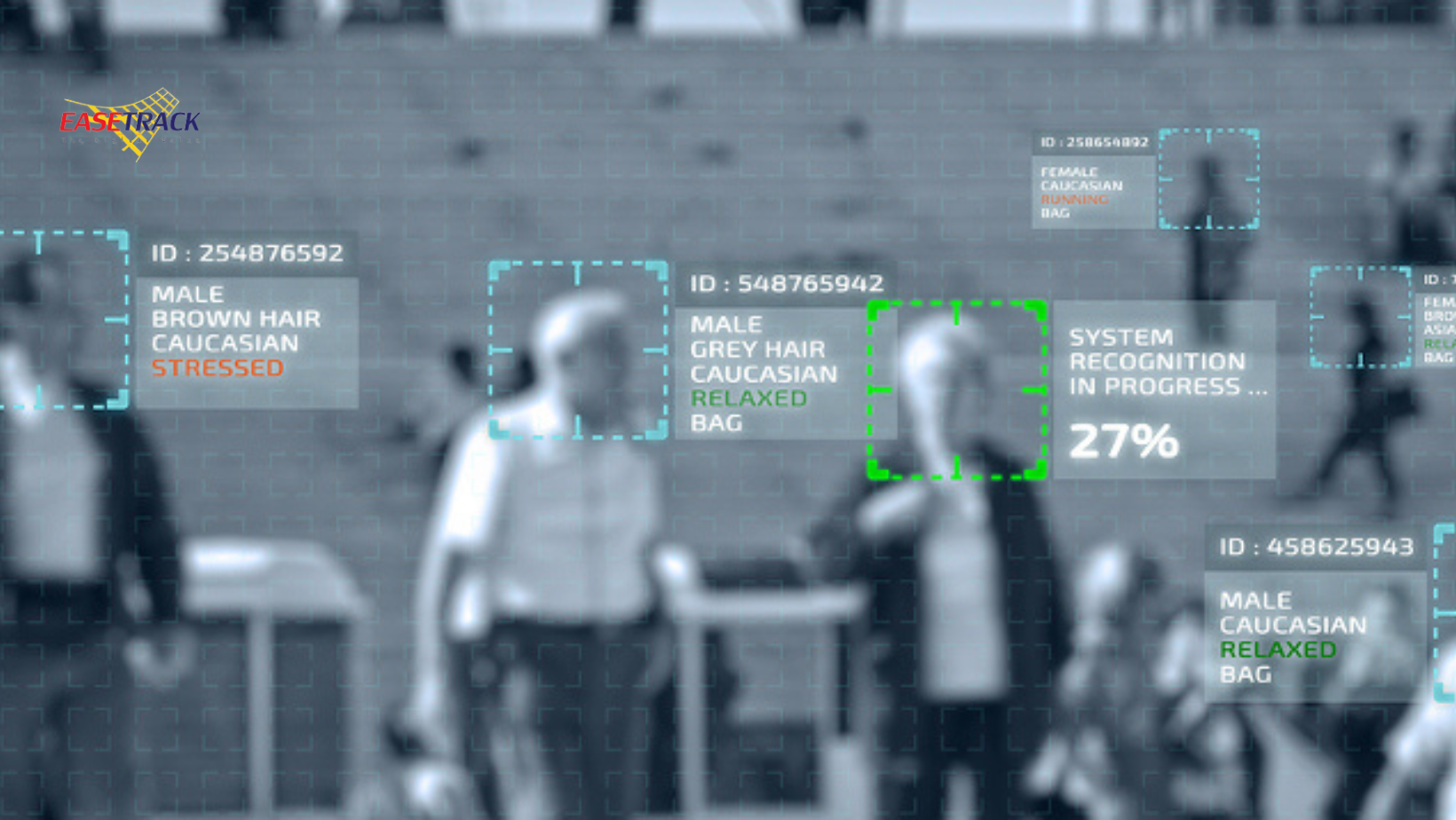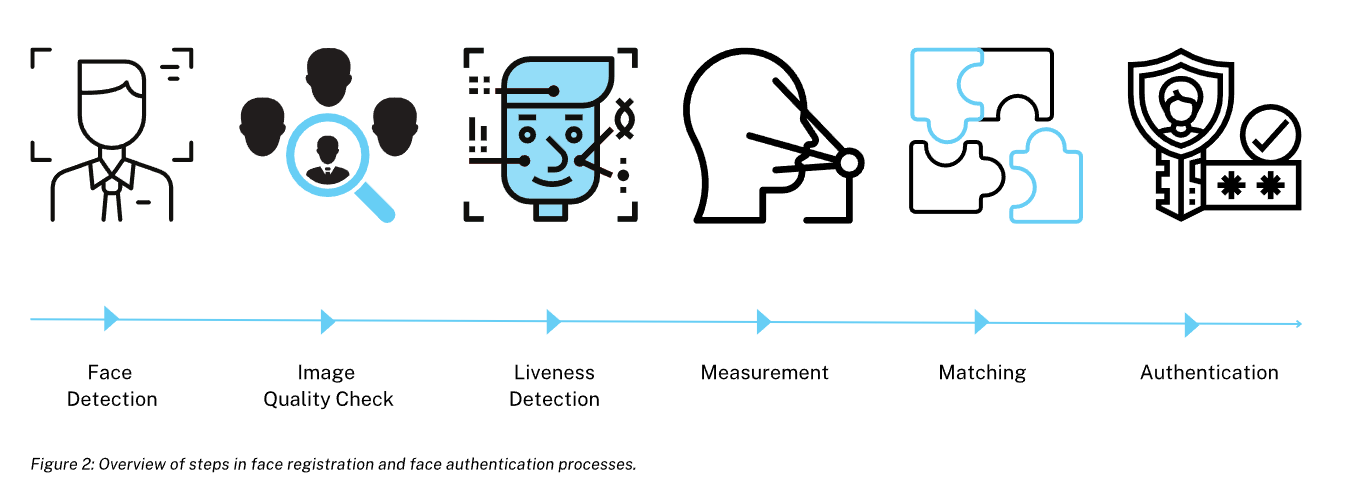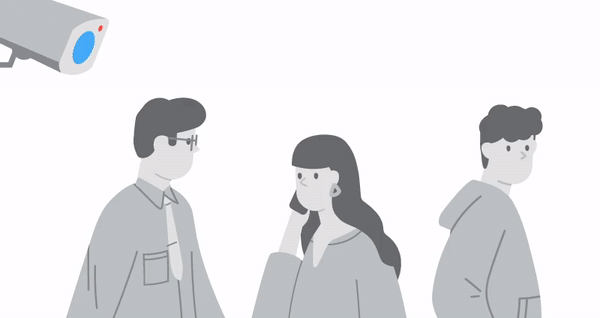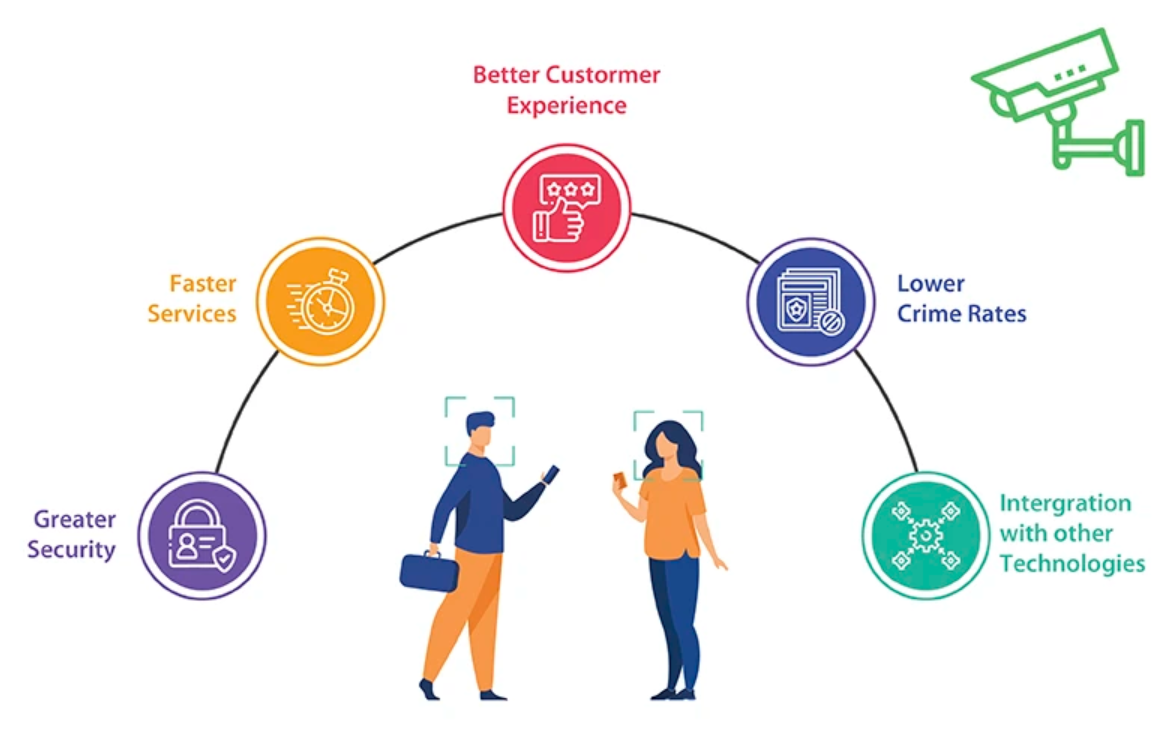
Facial recognition technology is not an aspect of science fiction anymore. Instead, it has gained tremendous traction across various industries for its impactful uses. A modern facial recognition system uses advanced IP cameras, artificial intelligence, machine learning algorithms and cognitive technology to identify, authorize, or verify a person from a video source or digital image. This could be to quantify human expressions, manage security systems, increase user engagement, analyze customer behavior, improve user safety and extract demographic information.
Earlier, enterprises used biometric systems to scan hands/fingerprints or detect iris to identify or verify an individual, which was an intrusive task. Now, face identification applications enable CCTV security algorithms to identify a person who is blacklisted and send an alert without their knowledge.
Moreover, many big brands such as Facebook, Amazon, Google, Microsoft are already reaping the benefits of facial recognition technology by deploying AI-based face authentication applications to optimize security, user experience and performance.

• How facial recognition works
There are two common face recognition algorithms: holistic matching and feature based. In a holistic matching method, the entire face is considered as input data to identify a particular person from the database. Whereas in the feature-based method, the face is divided according to features such as eyebrows, bridge of the nose, ears, and the contour of the lips, chin and spacing of the eyes.
In addition, a 3D face recognition technology is implemented which uses 3D sensors that help in capturing 3D face images and tracking a person’s face in real-time with improved precision. These algorithms are useful in developing real-time face recognition apps that identify an individual in diverse poses, lighting and expressions.

• Top use cases for facial recognition
Now that we are aware of how face recognition technology works, let’s look at some of its amazing use cases.
1. Make advertising more responsive
A face recognition system makes advertisements more engaging and personalized for its multifarious target audience. Some brands have already integrated facial recognition technology into digital billboards to customize their campaigns. By scanning a viewer’s face, the ads are played based on their age and gender. Besides, the application captures the expressions of customers to understand their emotions (happy, sad, disgusted, etc.) for a particular product
2. Security and surveillance
Facial recognition technology is widely used in security and surveillance applications to identify and track individuals in real-time. It is used to detect and prevent security threats, track the movements of suspects and monitor high-risk areas.
Airports are one of the most crowded areas and are under constant threat of criminal and terrorist activities. This is the reason why many airlines have already started implementing facial recognition systems to make baggage checking and flight boarding seamless as well as faster. Moreover, an AI face authentication application integrated with surveillance cameras helps airport authorities in:
-
-
- Identifying a terrorist already listed in police records
- A person caught performing a suspicious activity at the airport
-
3. Healthcare
An AI-based face recognition application can help the healthcare industry to diagnose a disease that results in a change in appearance like spreading eyes or drooping ears. A facial recognition scan can become a part of standard medical check-up that allows the identification of genetic disorders, such as Cornelia de Lange syndrome, Angelman syndrome, DiGeorge syndrome and others, which bring distinctive changes in facial characteristics. Facial recognition will speed up the clinical diagnosis and treatment of various genetic diseases.
It enhances patient safety, streamlines operations and improves the accuracy of medical records. It is used to verify patient identities, track patient movements and monitor medication dispensing.
4. Provide driver safety and personalization
Nowadays automotive companies, such as Tesla, Subaru and others are exploring various ways to use face recognition systems to recognize drivers. One such significant use is where a driver can scan their face to start a car instead of using a key. This would help in preventing vehicle theft.
Face recognition can also scan the face of a driver and alert them if they are losing their focus on the road. The face of a driver is scanned before starting the ride and their profile is maintained in the database. This profile tells about the preferences of the driver like the calendar, favorite radio station, the position of seat and more.
5. Helpful in identifying VIPs
A facial recognition system can identify esteemed customers/guests while entering a hotel or sports event automatically, which enhances their loyalty greatly. In hospitality, a face recognition system helps in identifying a returning guest at the front desk and displays information about their preferences using previously fed data. It can give suggestions on their choice of food, room preference, etc. At a sporting event, an organizer can identify VIP fans early, let them skip the queue and offer all VIP benefits. This will help in delivering a delightful fan experience to VIPs.
6. Retail and marketing
Retailers and marketers use facial recognition to personalize customer experiences and improve sales. It is used to identify and analyze customer demographics, shopping patterns, and behavior, to offer tailored recommendations and promotions.
For the retail industry, a facial recognition system is a game changer as it can instantly scan and identify a shoplifter, criminal, or customer with fraudulent history. The retail security officers are immediately informed when a person whose picture matches someone in their criminal database enters the store. Therefore, retail crimes have drastically reduced with the help of systems built on face recognition using artificial intelligence. It prevents losses, violent activities, theft and shoplifting in retail stores.
7. Access control
Facial recognition technology is used to control access to secure areas, buildings and devices. It is used in place of traditional access methods such as keys, cards, or passwords to enhance security and convenience.
8. Law enforcement
Facial recognition technology is used by law enforcement agencies to identify suspects, track criminals, and solve crimes. It is used in forensic investigations, to match images captured at crime scenes to images stored in databases of known criminals.
9. Time and attendance monitoring
Companies can use facial recognition to track employee attendance, productivity, and performance. It is used to automate time tracking, eliminate time fraud and reduce administrative overheads.

Key functionalities of facial recognition:
Identity verification: Facial recognition technology can be used for identity verification purposes, such as authentication for secure access to buildings, devices, or online accounts. This involves matching the facial features of an individual with a pre-existing database of known individuals.
eKYC and spoofing prevention: Facial recognition can be used in eKYC (Electronic Know Your Customer) processes to verify the identity of individuals. Facial recognition technology can also detect and prevent spoofing attempts, such as the use of a photograph or a video to bypass security checks.
Authorization: Facial recognition can be used to authorize transactions or access to secure systems, such as authorizing payments, confirming attendance at events or workplaces and unlocking mobile devices.
Customer segmentation and analytics: Facial recognition can be used in customer segmentation and analytics, where retailers can capture customer data to gain insights into shopping behaviors and demographics, including age and gender.
Health measures: Facial recognition can be used to monitor and enforce health measures, such as enforcing the use of masks, identifying individuals with a high body temperature, and tracking compliance with social distancing rules.
Overall, facial recognition technology has a wide range of applications in security, law enforcement, retail, healthcare, and other fields where identity verification, access control and data analytics are important.
Conclusion
In summary, leveraging facial recognition technology has several benefits for businesses. Including improved security Better customer experience Streamlined operations increased efficiency Searching for lost persons/pets etc. with the help of data (pictures) uploaded in the database.
The ability to accurately identify and track individuals in real time can be a valuable asset to businesses across industries. including services healthcare, retail and law enforcement by using facial recognition technology, businesses can gain a competitive advantage and support their long-term growth and success.
Source : softwebsolutions
Contact us: Easetarck
